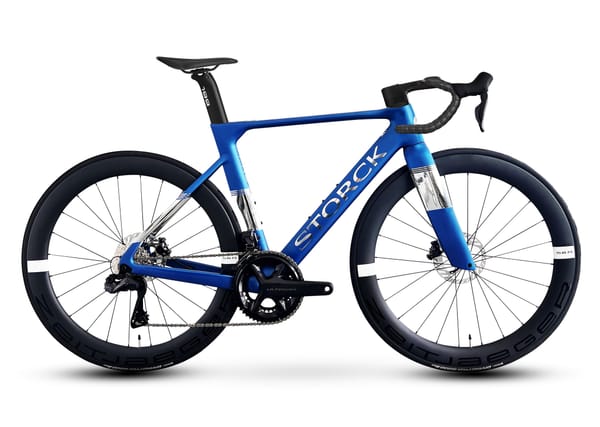Hitting Pause for Progress: A Cyclist's Guide to Strategic Rest Weeks
Learn when and how to take a rest week for optimal cycling performance. Understand planned vs. reactive rest, subjective metrics, and how to listen to your body.

We cyclists, bless our driven little hearts, often have a complicated relationship with rest. The mantra of "more is more" can get deeply ingrained, making the idea of intentionally backing off feel… well, wrong. But the truth, as any seasoned athlete (or their weary coach) will tell you, is that strategic rest isn't weakness; it's the secret sauce in the recipe for long-term gains. So, when do we actually need to hit pause, and how do we navigate that crucial downtime?
Traditionally, the rest week has been structured around the idea of three weeks of progressively harder training followed by a week of easier riding. The logic is sound: accumulate training stress, then allow the body time to repair and rebuild, ultimately emerging stronger. Think of it like those heavy squats you just crushed. Could you do that again an hour later? Nope. The body needs time to recover and adapt. The same principle applies, albeit on a longer timescale, to our cycling efforts.
But the calendar isn't always the best guide. While a predictable three-on, one-off structure provides a solid starting point, the ideal timing and duration of a rest week are far more nuanced. Several factors come into play, and ignoring them can lead to undertraining, overtraining, or simply feeling like a soggy biscuit.
One of the primary indicators is your chronic training load (CTL), often referred to as "fitness" in platforms like TrainingPeaks. A consistently rising CTL suggests you're handling the training well. However, sustained high CTL, especially in the 70-90+ range, can mask underlying fatigue. Regular communication with your coach (or honest self-assessment if you're self-coached) about how you're feeling and recovering is paramount.
Heart Rate Variability (HRV) and resting heart rate can also offer objective insights. A consistently declining HRV or a rising resting heart rate during a training block can signal accumulating stress. However, these metrics aren't foolproof. Sometimes HRV can paradoxically improve despite mounting fatigue, and external factors like poor sleep or nutrition can muddy the waters.
Ultimately, performance often speaks volumes. Are your intervals feeling harder than they should? Is your power output stagnating or even decreasing? Even your peak sprint power can be a surprisingly reliable indicator of freshness. If those short, sharp efforts feel sluggish and the numbers are down, your body is likely craving some recovery. Similarly, how you feel at and just above your Functional Threshold Power (FTP) is a sensitive gauge of fatigue. If even tempo rides feel like wading through treacle, it's a strong sign to ease off.
Planned vs. Reactive Rest: Two Sides of the Same Recovery Coin
We can broadly categorize rest weeks into two types:
- Planned or Preemptive: These are the rest weeks we schedule in advance, often following a block of intense training like VO2 max work. For a first-time VO2 block, even a week and a half to two weeks of hard effort might warrant a planned recovery. During a build phase with mostly threshold work, three weeks of training can often be followed by four to five easier days. For base training with sweet spot and endurance work, some athletes can even extend training blocks to four or five weeks before a planned rest. Experienced riders or those with a genetic predisposition for faster recovery may also tolerate longer blocks. However, master athletes (35+) generally require more frequent recovery due to a multitude of factors, including job stress, family commitments, and potentially slower physiological recovery.
- Reactive: These rest weeks are called for when your body throws up a red flag. A sudden dip in performance, a persistent lack of motivation, or even just that feeling of "heavy legs" that doesn't dissipate with a good warm-up can all be cues for a reactive rest. Ignoring these signs can lead to a deeper fatigue hole, increased risk of injury, or even illness. The dreaded scenario of only resting when sickness strikes is a prime example of a poorly managed reactive rest strategy.
So, which is better? It depends. High-intensity training blocks often benefit from planned rest. Lower-intensity blocks might allow for a more reactive approach. And for individuals with frequent life interruptions, a flexible strategy that blends planned and reactive rest might be the most effective.
Tuning into Your Subjective Signals (But with a Pinch of Skepticism)
While objective data provides valuable insights, don't discount the wisdom of your own body. Motivation is a powerful indicator. If the thought of getting on the bike fills you with dread, it's probably time for a break. Changes in sleep quality and mood can also be significant. Improved sleep and a less grumpy disposition often signal that recovery is happening.
However, our subjective feelings aren't always reliable. The driven, goal-oriented nature of many cyclists (that "Type A" personality) can sometimes lead to self-deception. The desire to stick to the plan or the fear of losing fitness can override the body's genuine need for rest. It's crucial to cultivate an honest relationship with yourself and be willing to back off when necessary, even if your brain is screaming "just one more interval!"
Sometimes, a lack of enthusiasm might not be overtraining but rather monotony. If the routine has become stale, a rest week followed by a slightly different training stimulus might be just what you need.
And while muscle soreness can sometimes correlate with fatigue, it's not a perfect measure. Many athletes can perform well even with some lingering soreness. Consider how the soreness feels once you're warmed up on the bike. Does it dissipate? If so, it might not be a limiting factor. Also, always rule out external factors like bike fit issues as the culprit for persistent soreness.
Finally, that peculiar feeling of being "fat" at the end of a rest week? It's likely just the combination of being well-fueled, hydrated, and potentially some water retention as your body recovers and replenishes glycogen stores. A few easy spins will usually dispel that sensation.
Ultimately, knowing when to end a rest week is a blend of objective and subjective cues. How do your legs feel when you spin easily? How do they respond to a few short bursts of intensity or a group ride? Do you feel that familiar spring returning? Don't be afraid to experiment and learn your own body's rhythm. Seven days might be arbitrary, but listening to the symphony of signals your body is sending is anything but.





